Everybody loves a fast sports car. However, aviation fans know cars have nothing on jets. They have all the benefits of a good car, but the difference is that you can use them to conquer the sky.
While commercial planes and private jets are something to behold, only one aircraft can inspire true, visceral excitement—the fighter jet. These incredible beasts of the sky are designed to target and destroy other enemy aircraft. Therefore, engineers are constantly trying to make them as fast as possible. How fast? Find out with our list of the 7 fastest fighter jets in the world.
Fighter Jets 101
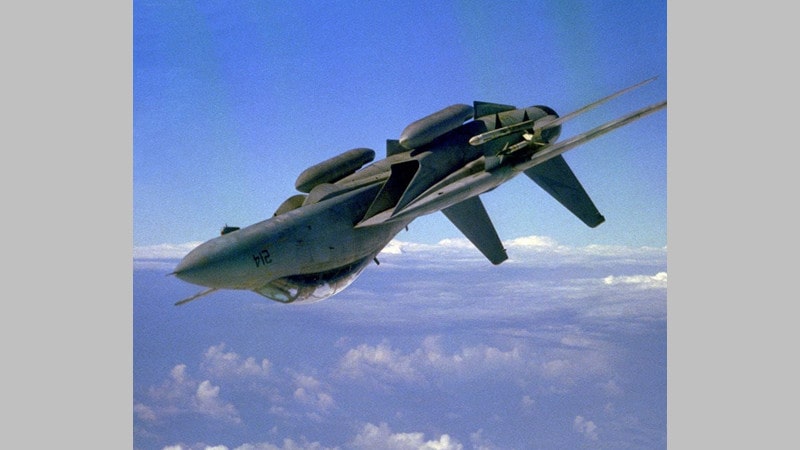
Image source: Pinterest
Before delving into the fastest fighter jets in the world, we need to cover the basics—what is a fighter jet? While a regular plane may be easy to define, fighter jets require a special classification of their own.
For starters, fighter jets are fixed-wing military aircraft, built for air combat. Their primary purpose is to target and destroy enemy aircraft in order to establish air superiority during a conflict. Because they’re supposed to be combat machines, they need to have several key characteristics:
• They’re equipped with specialized weapons — Since they’re meant to fight off enemy planes, fighter jets have specialized weapons fitted to them. Most modern jets use machine guns, since they’re light, and are capable of firing many rounds in rapid succession.
However, certain types of fighter jets like the F16 use cannons. Cannons are rarely used in air combat since they have a very limited range. However, they are used to conduct ground strikes, specifically targeting things like armored vehicles, tanks, or military structures.
• They’re fast — A fighter jet needs to be able to outmaneuver enemy aircraft. Therefore, the most defining feature of fighter jets is their incredible speed.
• They are small to medium size — In air combat, bigger isn’t always better. Though they’re still huge when compared to your average human, fighter jets are puny when you contrast them with the standard commercial airplane.
However, their size is actually an advantage. To successfully engage in air combat, fighter jets need to be quick and agile. A huge, bulky aircraft simply wouldn’t be able to perform evasive maneuvers needed to bring down enemy aircraft.
7 Types of Fighter Jets
As we’ve already mentioned, all fighter jets are designed for air combat. Therefore, all of them have the above-listed key features. However, what sets them apart from one another is the type of combat they’re supposed to engage in. That is how the military classifies fighter jets into several different types.
1. Air Superiority Fighter
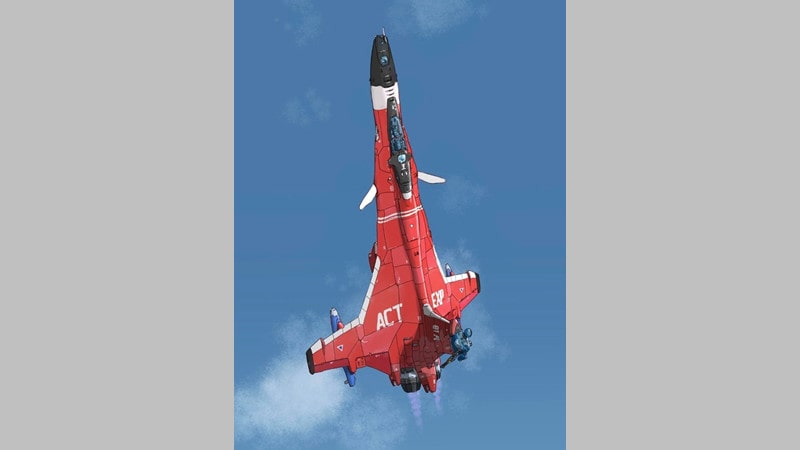
Image source: Pinterest
If someone mentions a fighter jet, then you will most likely think of an air-superiority fighter. This incredible machine is defined by its immense speed, maneuverability, and air-to-air weapons system. As its name suggests, its primary purpose is to battle enemy aircraft for airspace dominance.
The military equips these jets with light artillery to target agile, lightly armored enemy aircraft. They’re capable of at least Mach 2 with a range greater than 3,000 km without the need to stop for refueling.
They come armed with at least 8 missiles and can engage with enemy fighters using missiles beyond the visual range. Some also have a few IR missiles and guns specifically designed for pilots to deploy in agile dogfights.
Though their initial purpose was limited to air combat, some of them can also perform other functions, like air-to-surface attacks, nowadays.
2. Fighter-Bomber

Image source: Pinterest
A fighter-bomber is an interesting aircraft. During its long history, engineers have modified it to serve as both an attack aircraft, and a light bomber. However, you shouldn’t confuse it with either of these types of jets. Both attack aircraft and light bombers were developed specifically for their roles. A fighter-bomber, on the other hand, started as both and got adapted later to serve as either one or the other.
Though these planes were pretty vital in past conflicts, such as during WWII, they’ve since fallen largely out of use. That is mostly because the introduction of guided missiles has allowed manufacturers to modify air-superiority fighters to perform multiple functions.
Nevertheless, the military still keeps a few fighter-bombers around, like the North American F-100 Super Sabre and McDonnell Douglas F-4 Phantom II.
3. Interceptor

Image source: Pinterest
The name of this aircraft says it all—the interceptor is a fighter aircraft specifically made for defensive interception missions. Therefore, its primary purpose is to target bombers and reconnaissance aircraft.
They’re designed for quick take-off and are capable of reaching high altitudes much faster than bombers and air-superiority aircraft. While this is impressive on paper, they don’t do so well in fighter vs. fighter combat, since they prioritize speed over maneuverability.
4. Heavy Fighter

Image source: Pinterest
Heavy fighters are a type of aircraft which were designed to operate over longer ranges. Historically, this aircraft was most popular in the 1930s and 1940s. Manufacturers designed them to carry heavier weapons, as well as operate at longer ranges than light fighter aircraft. Because this required more power, they had built-in twin-engines and multi-person crews piloting them.
Heavy fighters included several subtypes, such as night-fighters. Engineers designed night-fighters for night combat or flights that were supposed to take place during times of bad visibility. On the other hand, day interceptors and day fighters were used for day combat. Like night fighters, they came equipped with radar technology, which made them ideal for performing defensive maneuvers.
However, because of advances in technology, traditional heavy fighters fell out of use. But some aspects of their design still survive today in various air-superiority aircraft.
5. Light Fighter

Image source: Pinterest
Light fighters rest on the lower weight range of the spectrum. However, their smaller frame is entirely intentional. The light fighter consists of carefully selected competitive features that ensure the aircraft has the best performance at the lowest possible price.
A well-designed lightweight fighter can go toe-to-toe with heavier types of jets in combat. Their compact design is particularly useful for missions that require the element of surprise. Since they’re small, they don’t have a high radar presence. They can, therefore, ambush enemies more easily, especially during night-time fights.
As expected, their small frame doesn’t allow them to carry heavy weaponry. However, their agility alone makes up for that, since they can quickly strike down upon an aircraft, without needing to waste too much ammunition.
It is, therefore, not surprising that light fighters have become one of the most favored types of fighter jets all over the world. Currently, the most popular light fighter is the US Lockheed Martin F-35 Lightning II.
6. Reconnaissance Fighter
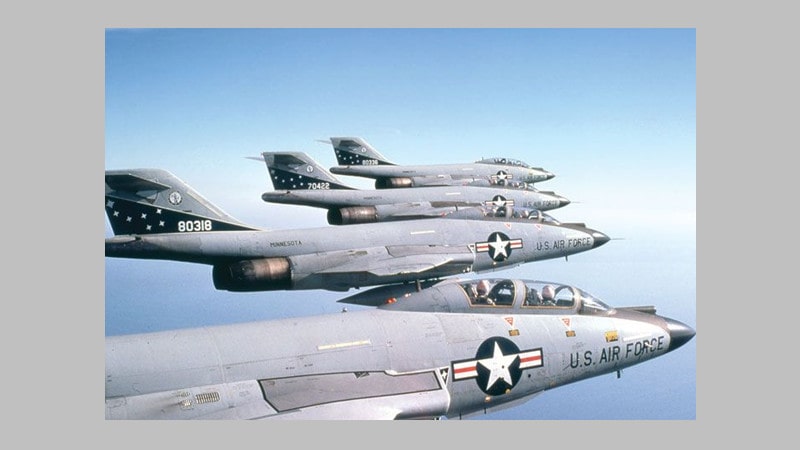
Image source: Pinterest
The term reconnaissance brings up images of spies and covert government missions. And that is exactly what this jet is made for. A reconnaissance fighter is a jet that’s supposed to gather intelligence. That involves taking aerial spy photographs, intercepting signal communication, and gathering technical intelligence, such as radar, acoustics, nuclear and chemical intelligence.
Modernized reconnaissance aircraft come equipped with UAVs, making them capable of performing real-time surveillance as well. All in all, they’re a real piece of technological marvel straight out of a James Bond film!
7. Strategic Fighter (Including the Escort Fighter and Strike Fighter)

Image source: Pinterest
The last, but certainly not least fighter aircraft we need to mention is the strategic fighter. This jet is a well-equipped, long-range fighter plane, capable of fulfilling multiple roles. The military typically uses it as an escort fighter, to protect bombers and penetration fighters while they carry out offensive maneuvers.
They can also be used for combat patrols, especially in areas that are far away from its home base. Originally, this type of aircraft was a heavy fighter. However, recent advancements in tech meant that engineers gave the strategic fighter a design upgrade. Nowadays, it has a lighter and more maneuverable build, which allows it to be more nimble in the air.
What Is the Fastest Fighter Jet Ever Made?
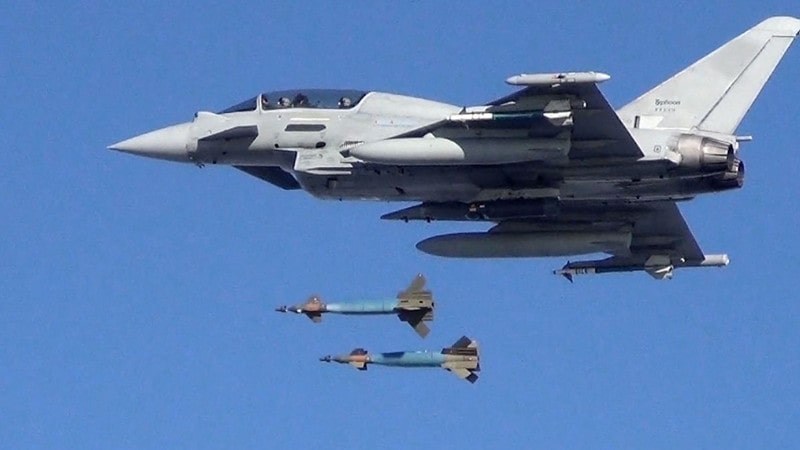
Image source: Pinterest
So, as we’ve established, there are many types of fighter jets the military has deployed over the years. However, though they all have different functions, for the most part, they all share one thing in common—speed. A fighter jet is one of the fastest man-made machines in the world.
In fact, the world record for the fastest fighter jet was an experimental aircraft NASA launched in 1959. The NASA/USAF X-15 was a hypersonic rocket-powered aircraft that the US air force created in partnership with NASA as a part of their X-plane series of experimental aircraft.
The initial X-15 broke several records both for speed and altitude records, when in the 1960s it reached the edge of outer space to retrieve valuable information that NASA later used to design their spacecraft. During this journey, the X-15 reached an altitude of 102,100 feet (31,120 m), or 19.34 miles. It also managed to achieve a speed of a whopping 4,520 mph, which translates to 7,274 km/h.
That number is the world record for the highest speed ever recorded by a man-made, crewed aircraft. However, a lot of things have changed since the 1960s. Advancements in aerial technology have transformed modern fighter aircraft into real super machines.
Therefore, it stands to reason that a modern-day fighter aircraft is faster than the X-15, right? Sadly, that isn’t so. Every fighter aircraft currently in service can reach speeds of over 1,320 mph. That means that all of them can fly two times faster than the speed of sound. Yet none of these jets are capable of breaking the record set by the X-15.
Therefore, when asking what is the fastest fighter jet in the world, NASA’s X-15 is still the undisputed holder of the title.
7 Fastest Fighter Jets in the World
The X-15 may be a record holder for the fastest in history, but it was not the only plane in the experimental X-series. There are several other experimental aircraft that were capable of reaching speeds close to the X-15’s.
In fact, several aircraft that were in use in the 20th century or are still in use right now could also rank as the fastest fighter jets in the world. Not surprisingly, American and Soviet, or Russian, machines dominate the list.
1. Lockheed SR-71 Blackbird – Mach 3.4 (2,500 mph+)
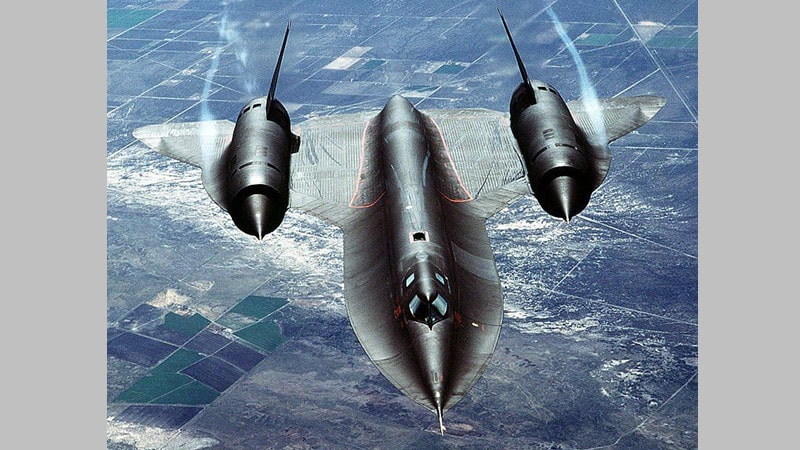
Image source: Pinterest
• Origin: American
• Price: $34 Million
• Type: Reconnaissance
• Max Speed: Mach 3.4
You just know that the top spot on the fastest fighter jets in the world list had to go to another X-series experimental plane. The Lockheed SR-71 Blackbird’s top speed is half that of the X-15. However, that’s still well over Mach 3.0, meaning that the aircraft is three times faster than the speed of sound!
What’s more, the SR-71 is the fastest fighter jet ever, since the X-15 had more of a rocket-based design. Also, unlike the X-15, the Lockhead actually saw service. In the 1960s, the USAF used the aircraft for reconnaissance missions, particularly those related to gathering intelligence about Soviet activity.
Because the jet was supposed to remain unseen, engineers designed it for high-altitude flights. The plane could easily climb to 25,000 meters and was one of the few aircraft capable of cruising at such heights. Sadly, as impressive as this plane was, its reign did come to an end.
As reconnaissance tech advanced, NASA began using satellites to conduct long-distance surveillance. This rendered the SR-71 obsolete and the USAF retired the last of these incredible machines by 1999.
2. Lockheed YF-12 – Mach 3.2 (2,275 mph)

Image source: Pinterest
• Origin: American
• Price: $18 Million
• Type: Prototype
• Max Speed: Mach 3.2
The second entry on our list actually spawned the first. The Lockheed YF-12 started as the prototype of the SR-71 Blackbird.
NASA started developing this aircraft in the 1960s. They introduced three YF-12 aircraft which were meant to serve as prototypes to replace the F-106 Delta Dart interceptor that the US was using in the Vietnam war. However, after some brief action in the war, USFA retired the YF-12s.
Still, they used the YF-12 as a blueprint for the SR-71. The design similarities are especially apparent in the air-to-air missiles both aircraft have.
Despite being a prototype, this jet could reach some impressive speeds. It was capable of flying at speeds of up to 3.2 Mach, or just over 2,275 mph. To date, it’s one of the fastest and heaviest interceptor planes in the world!
3. Mikoyan-Gurevich MiG-25 Foxbat — Mach 3.2 (2,190 mph)

Image source: Pinterest
• Origin: Russian
• Price: $80 Million
• Type: Interceptor
• Max Speed: Mach 3.2
The third entry on our list surprisingly doesn’t go to an American aircraft. This time, it’s a Russian aircraft that’s packing speed. The Mikoyan-Gurevich MiG-25 Foxbat is a fighter jet the Soviet Union developed in the 1960s.
They created this jet at the height of the cold war, specifically so it could attack high-speed surveillance aircraft. Because it was supposed to go toe-to-toe with equally advanced US X-series jets, excessive speed was the name of the game.
The MiG-25 Foxbat can reach speeds of 3.2 Mach or 2,190 mph, which is well over the speed of sound. That makes it the fastest fighter jet currently in use, by quite a wide margin.
4. Bell X-2 Starbuster – Mach 3.2 (2,094 mph)

Image source: Pinterest
• Origin: American
• Price: N/A
• Type: Research
• Max Speed: Mach 3.2
The X-15 and the Bell X-2 have a few things in common. For one, both types of aircraft have a rocket-wing style design. That means that their defining characteristic is speed. What’s more, NASA used both jets for research purposes.
The Bell X-2 was first developed in the 1940s, primarily for studying flight characteristics. Reserch focused on the thermal thicket heating that occurs when jets achieve speeds beyond Mach 2. Consequently, engineers made Bell X-2 for high-altitude flights, so that they could test the effects of aerodynamic friction.
Sadly, its reign ended when a flight pilot accidentally made a sharp turn when he reached supersonic speeds. This movement caused him to lose control and crash the vehicle. He managed to deploy his parachute, but since the chute was too small, he landed too forcefully.
The accident was enough to make NASA discontinue the aircraft. However, they retained all the research they gathered while using the Bell X-2. Some years down the line, they put the information to good use and created the X-15.
5. XB-70 Valkyrie – Mach 3.02 (2,056 mph)
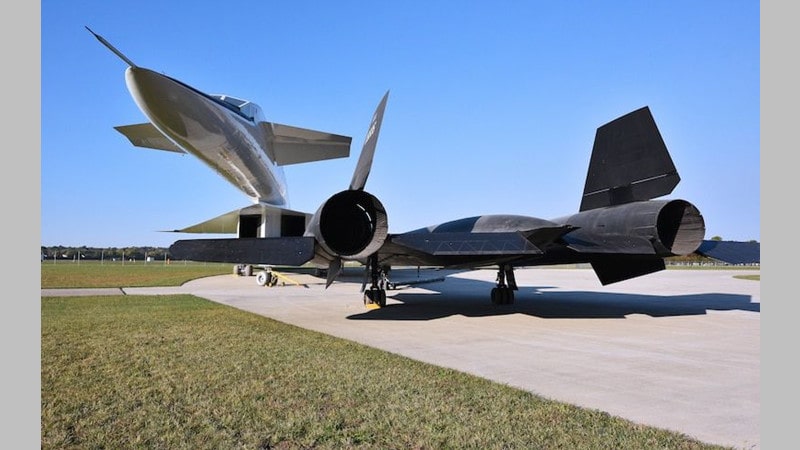
Image source: Pinterest
• Origin: American
• Price: 750 million
• Type: Bomber
• Max Speed: Mach 3.02
After all the research and experimental aircraft, we get to the real heavy-hitters. The XB-70 Valkyrie started as a prototype of the planned B-70 nuclear bomber. American engineers developed this jet in the late 1950s, giving it several unique characteristics.
For one, the outer edge of the wings was hinged, which means that the pilot could pivot the craft downward at a 65° angle. This design improved the jet’s directional stability, helping it achieve supersonic speeds.
In fact, the XB-70 Valkyrie was the only bomber that was capable of traveling at supersonic speeds. It could also cruise at speeds of Mach 3+, at some 70,000 feet in the air! At those heights, engineers believed that it was practically immune to any potential attacks from interceptor aircraft. What’s more, it was much faster than any other aircraft available at the time, so radar had a hard time catching it.
However, all good things must come to an end. In the late 1950s, the Soviet Union introduced surface-to-air missiles that could threaten the XB-70. As a response to this, the USAF started conducting lower-level test flights, which rendered the aircraft obsolete. So, the air force discontinued it and used the design to create a replacement, the B-52.
6. MiG-31 Foxhound – Mach 2.83 (1,864 mph)

Image source: Pinterest
• Origin: Russian
• Price: $33 Million
• Type: Interceptor
• Max Speed: Mach 2.83
Though the MiG-31 Foxhound was created to replace the MiG 25, this aircraft is actually much slower. But don’t let that fool you—it’s still one of the fastest fighter jets in the world. The MiG-31 Foxhound is a supersonic interceptor aircraft Soviet engineers developed in the 1970s.
It shared a lot of design similarities with the MiG-25, including a D30-F6 jet engine with a 152 kN thrust. This aircraft is also one of the only jets that use a phased array radar system and freely fires long-range air-to-air missiles. It also had a sleeker, more stable wing design, which gave it greater agility in the air.
Agility is precisely the reason why the MiG-31 is slower than the MiG-25. While this predecessor could achieve incredible speeds, it lacked maneuverability, especially in lower altitudes. In contrast, the MiG-31 was perfectly nimble while in the air, meaning it could evade enemy aircraft more efficiently even at a reduced speed.
7. F-15 Eagle – Mach 2.5 (1,650 mph)

Image source: Pinterest
• Origin: American
• Price: 30 million
• Type: Multirole
• Max Speed: Mach 2.5
Thus far, we’ve covered prototypes, interceptors, and bombers. But with this entry on our list, we have a real specialist on our hand. The F-15 Eagle, also called the McDonell Douglass F-15, is the fastest multirole fighter jet in the world. It’s one of the most widely popular multirole fighters, coming in several different variants like the F-15E Strike Eagle and the F-15N Sea Eagle.
This aircraft first came about in the 1970s. Engineers wanted to create an aircraft that could reach speeds of 3.0 Mach, but their goal proved too expensive. They subsequently lowered the speed to 2.5 to stay within budget. The F-15 may have turned out slower, but it’s still one of the fastest fighter jets in the world. What’s more, it has other features that more than make up for the lower speed.
To begin with, it’s one of the most agile fighter aircraft currently in use. Not only that, but it comes equipped with a 20mm M61A1 Vulcan gun, and several types of missiles, like the Sparrow, Sidewinder, and 120-AMRAAM crash missiles. With this combo of heavy artillery and top speeds, it’s not surprising that this aircraft has over 100 confirmed aerial combat victories.



